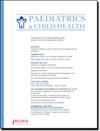为病情复杂的儿童提供门诊结构化临床计划后的医疗保健使用情况
IF 1.8
4区 医学
Q2 PEDIATRICS
引用次数: 0
摘要
目的 尽管医疗资源利用率较高的复杂病症(CMC)儿童通过门诊结构化临床项目(SCP)来优化其健康状况,但人们对他们入院后不久医疗服务使用趋势的变化知之甚少。我们对这些趋势进行了测量,并评估了患者特征对预测这些趋势的作用。方法 对 506 名新加入门诊学术性 SCP 的 CMC 进行回顾性分析。我们测量了入院后头 6 个月的门诊和住院医疗服务使用情况。通过聚类分析,我们按医疗服务对具有相似趋势的 CMC 进行了分类。我们根据聚类类别评估了患者的人口统计学特征(如年龄)和临床特征(复杂慢性病 (CCC) 的类型和数量)。结果 大多数(90.3%)注册的 CMC 都有≥1 个 CCC;53.8% 有≥3 个 CCC。在所有 CMC 中,门诊专科就诊率、电话就诊率和住院率(不包括重症监护室)在加入后的前 6 个月显著下降。例如,住院率在第 1 个月和第 6 个月分别从 9.7% 降至 4.5%(P < 0.001)。聚类分析显示了入院 6 个月后的四类住院趋势:72.9%的CMC没有住院;16.0%的CMC住院次数先增加后减少;8.3%的CMC住院次数减少;2.8%的CMC住院次数增加。患者和临床特征无法明确区分 CMC 的住院趋势。结论 虽然随着时间的推移,CMC 的总体门诊和住院医疗服务使用率有所下降,但这种下降并不一致。病人的基本人口和临床特征并不能预测医疗服务的趋势。本文章由计算机程序翻译,如有差异,请以英文原文为准。
Health care utilization after enrollment in an outpatient structured clinical program for children with medical complexity
Objectives Although children with medical complexity (CMC) with high health resource utilization use outpatient structured clinical programs (SCP) to optimize their health, little is known about variation in trends of their health service use shortly after enrollment. We measured these trends and assessed the utility of patient characteristics to predict them. Methods Retrospective analysis of 506 CMC newly enrolled in an outpatient, academic SCP. We measured outpatient and inpatient health service use for the first 6 months following enrollment. Using cluster analysis, we categorized CMC with similar trends by health service. We assessed patient demographic (e.g., age) and clinical [type and number of complex chronic conditions (CCC)] characteristics with the cluster categories. Results Most (90.3%) CMC enrolled had ≥1 CCCs; 53.8% had ≥3 CCCs. For all CMC, outpatient specialty visits, phone calls, and hospitalizations (not involving ICU) decreased significantly over the first 6 months after enrollment. For example, the hospitalization rate decreased from 9.7% to 4.5% in the 1st and 6th months, respectively, (P < 0.001). Cluster analysis revealed four categories of hospitalization trends, 6 months after enrollment: 72.9% of CMC had no hospital use; 16.0% had increased then decreased use; 8.3% had decreased use; and 2.8% had increased use. No patient and clinical characteristics clearly distinguished which hospitalization trend CMC experienced. Conclusions Although the overall population of CMC experienced decreased outpatient and inpatient health services utilization over time, this decrease was not uniformly experienced. Fundamental patient demographic and clinical characteristics did not predict health service trends.
求助全文
通过发布文献求助,成功后即可免费获取论文全文。
去求助
来源期刊

Paediatrics & child health
医学-小儿科
CiteScore
2.10
自引率
5.30%
发文量
208
审稿时长
>12 weeks
期刊介绍:
Paediatrics & Child Health (PCH) is the official journal of the Canadian Paediatric Society, and the only peer-reviewed paediatric journal in Canada. Its mission is to advocate for the health and well-being of all Canadian children and youth and to educate child and youth health professionals across the country.
PCH reaches 8,000 paediatricians, family physicians and other child and youth health professionals, as well as ministers and officials in various levels of government who are involved with child and youth health policy in Canada.
 求助内容:
求助内容: 应助结果提醒方式:
应助结果提醒方式:


